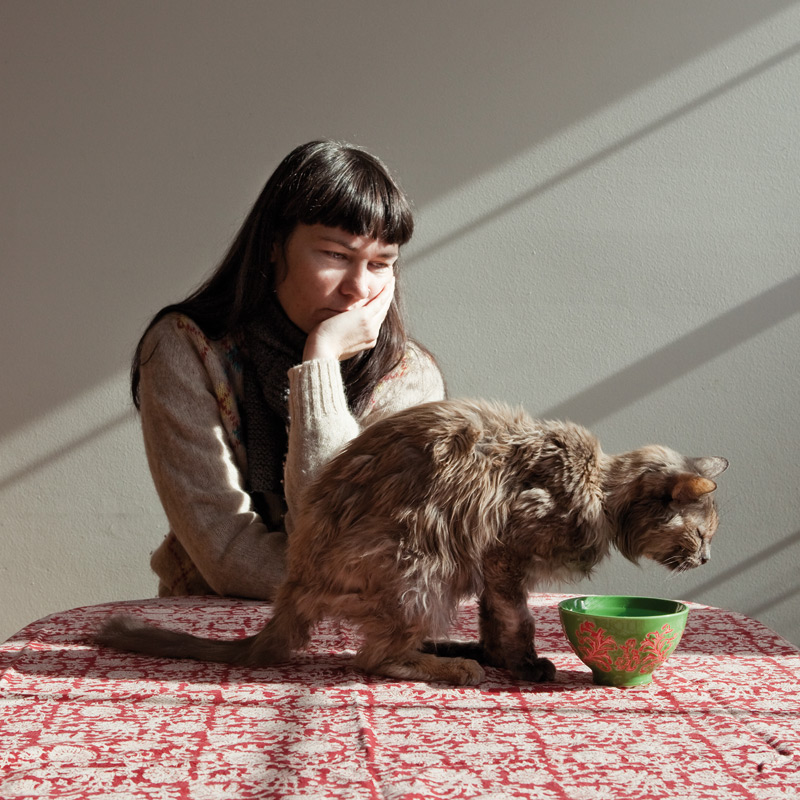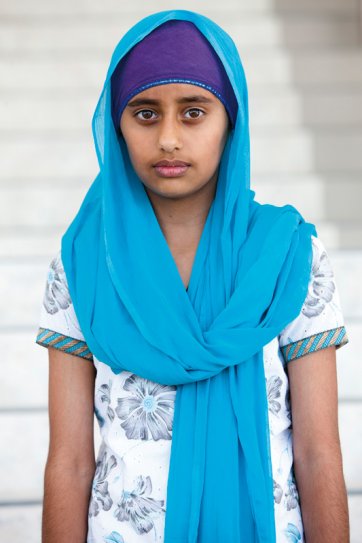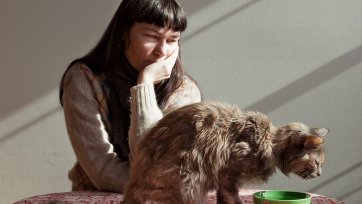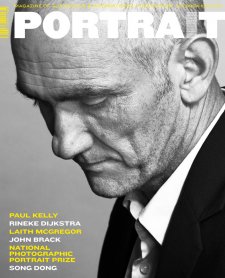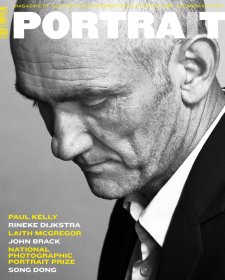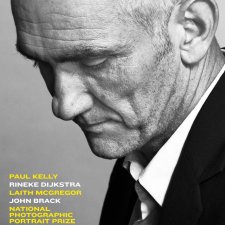Photography’s potency as a medium for portraiture has been called into question ever since photographic portraiture first came into existence. Introduced to Australia by a photographer named George Goodman, who opened the country’s first photographic studio on the roof of a Sydney hotel in 1842, photography was embraced by prospective portrait subjects for its speed and economy and for the manner in which it enabled people to see themselves in disconcertingly ‘true’ and startling detail. Having the likes of George Goodman execute your daguerreotype portrait might have meant a minute or so of uncomfortable, absolute stillness, but sitters agreed that submission to the process was worth the result.
The Australian, reporting on Goodman’s work in 1843, described in astonished tones the quality of portraits that were vastly more than just likenesses and that instead provided ‘in the space of a few seconds, a complete transcript of our outward man’. ‘Photographic portraiture’, the newspaper opined, ‘depicts not merely the exactness of feature so easily attainable by hand – it preserves the life and animation, the delicacy of expression; in fact, so much of the character of the individual as is displayed in his features’. Other accounts of the invention announced that, with a daguerreotype, a sitter could see himself ‘as much, as truly, and as fully as he sees himself in the most accurate looking-glass, but with this advantage: that the photographic likeness is the image as if it were removed from the surface of the mirror and made perpetual’. Equal parts sideshow, sorcery and science, photography appealed also for being more affordable and by the 1860s had made portraiture – hitherto the preserve of those with status and means – something available to everyone.
The same characteristics that made photographic portraiture so popular, though, were also seized on by some as its flaws. Photographs were maligned by painters and others for being the result of a chemical, mechanical process rather than an unquantifiable, creative and imaginative one. By this reasoning, photographers found themselves dismissed as untutored or uncouth technicians and their work positioned so as to occupy a servile and undistinguished place in the hierarchy of art forms. Some portrait painters, their livelihoods increasingly undermined by photography, adapted their practices in response to the new technique. Others continued to trade on the supposed superiority of painting and drawing as a method for portraiture, promising their clients ‘correct’ likenesses that avoided, in the words of one 1850s Sydney portraitist, ‘the stiffness which detracts so much from correctness of expression’ in photographs. Rather than resulting in portraits that ‘preserved life and animation’, photography was declared by its detractors to be better suited to dispassionate and documentary purposes and thus responsible for portraits that amounted to nothing other than tricksy, mirror-like renderings of flat, ‘unnatural’ faces. Photographic portraits were deemed expressionless not just for their depictions of blank-faced sitters discomfited by the physical conditions of the sitting, but for their negation of the process by which a sitter’s presence or individuality might be made visible through skill, sensibility and imagination.
2012 marked the 170th anniversary of Goodman’s arrival in Sydney and of the first recorded Australianmade photographic portraits. Yet photographic portraiture still struggles to shed its association with sterility and surface and to overcome the assumption that photographic portraits will only ever function as likenesses incapable of capturing something deeper, mysterious or hidden about their subjects. Photography’s reputation has suffered further in the present day for being more accessible and available than it ever was and for being practised in social and technological conditions that dismantle or abolish the distinctions between skill and formula, imagination and instantaneity, creativity and commercialism, permanence and transience. We live in a society saturated with photographic images, many of them relentlessly ubiquitous, shamelessly declamatory or infinitely manipulable. Despite this, photographic portraiture retains traces of the characteristics that so intrigued people on photography’s invention close to two centuries ago. It remains the most popular and accessible medium for images of ourselves and those close to us as well as a compelling and resonant ‘passport’, as photographer Sandy Edwards sees it, to the lives, experiences and mysteries of strangers: the well-known people we admire, desire or revile; and those that most move, inspire and intrigue us. As legendary American photographer Richard Avedon stated of his portraits: ‘They’re readings of the surface. I have great faith in surfaces. A good one is full of clues’. Though perhaps merely surfaces that undergo multiple, subjective and divergent readings, the best photographic portraits, as Avedon suggested, hint at what’s hidden behind a sitter’s face and perhaps have the capacity to guide the viewer to a sense of another person’s character and presence.
It’s these qualities that the National Portrait Gallery looks for in developing its collection and which are celebrated annually with the National Photographic Portrait Prize: a $25,000 award instituted in 2007 to support and showcase the strength and inventiveness of photographic portraiture as practiced by Australian photographers today. As has been so for each of its past five iterations, the 2013 Prize attracted in excess of 1,000 entries, from which three judges have selected fifty-three portraits demonstrating varied points on the spectrum of photographic portraiture’s possibilities for watchfulness and suggestion. This year’s selection encompasses tightly-focussed and finely-realised studies of beautiful and distinctive faces: Melanie Faith Dove’s flawless study of a face in profile, for example; Charlie White’s examination of the classical beauty of his subject; Louise Whelan’s arresting portrait of Kaloti Parmjit. Others – such as Jeremy Shaw with his portrait of Burt Bacharach, John Tsiavis with his image of Chris Lilley, or Linda Wachtel in her portrait of artist Vincent Fantauzzo – have selected complex compositions employing playfulness, settings, symbols and scenarios. No matter what their method, each of the portraits selected for the 2013 National Photographic Portrait Prize demonstrates that transactions between photographer and subject – far from being ephemeral, random, inane or clinical – can be mindful and collaborative. The sitter, whether with bravery, wit, defiance or selflessness, submits to the camera’s scrutiny while the photographer crafts a portrait that offers the possibility of contemplation – and wherein the worth and the wonder of the photographic surface is reaffirmed.
